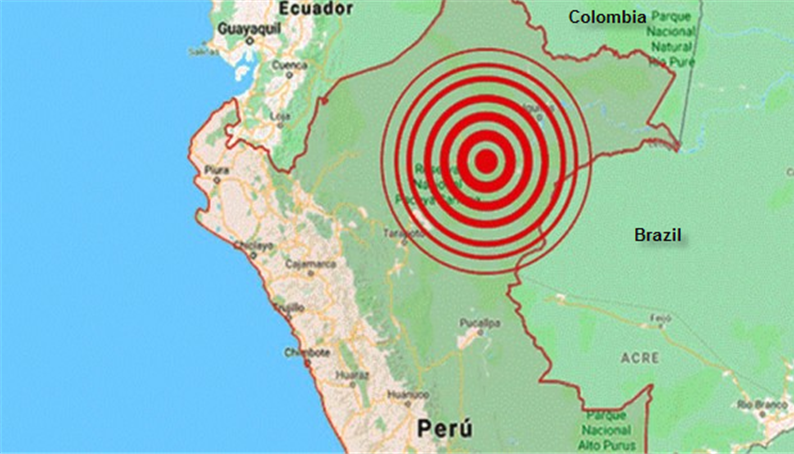
A state of emergency has been declared for several areas in the northeast of the country, where the most serious damage has been reported from an 8.0 earthquake on May 26. The emergency status allows for rapid response by government institutions, namely health, housing and transport.
The quake occurred at 2:41 am, with the epicenter some 70 km southeast of Lagunas, in the Alto Amazonas province of Loreto. Although the depth of the quake was about 100 km below the surface of the earth, the tremor was felt 800 km west in the city of Lima and as far as Ecuador, Colombia and Brazil. The quake lasted over two minutes.
Two people were killed in the quake — a man died when a rock fell on his house, and a 15-year-old sustained head injuries trying to get out of his house. Some 15 people were injured. Damage was reported to over 400 homes in total, plus some school buildings and roads was reported in several areas, from Lagunas (pop. 10,000) and the closest city, Yurimaguas, to as far west as Cajamarca. Damages were not worse because the areas are, in general, sparsely populated. The Pacaya-Samiria National Reserve is within the affected area.
While Transport officials inspected damage to the recently-built IRSA Norte highway in Cajamarca, Civil Defense staff were taking tents and blankets to Yurimaguas and Lagunas for families whose homes are now uninhabitable. The minister of Education, Flor Pablo, has ordered the closing of 500 school buildings in a radius of five regions until full inspection of their infrastructure is completed; damage has been reported in 64 schools so far.
An earthquake drill, planned before this tremor occurred, is set to be held nationwide on May 31, which is Natural Disaster Education and Reflection Day.
The date is the anniversary of the 1970 earthquake off the coast of Chimbote, which affected a wide area of coast and highlands. The major damage was in the Callejon de Huaylas, where much of Huaraz’ buildings were damaged, and to the neighboring town of Yungay where thousands of people were killed in an avalanche of glacial ice, mud and debris when a part of the snow-capped Mt. Huascaran broke off. The avalance slid down some 18km to Yungay at a speed of 280 to 335 km per hour.
Related





